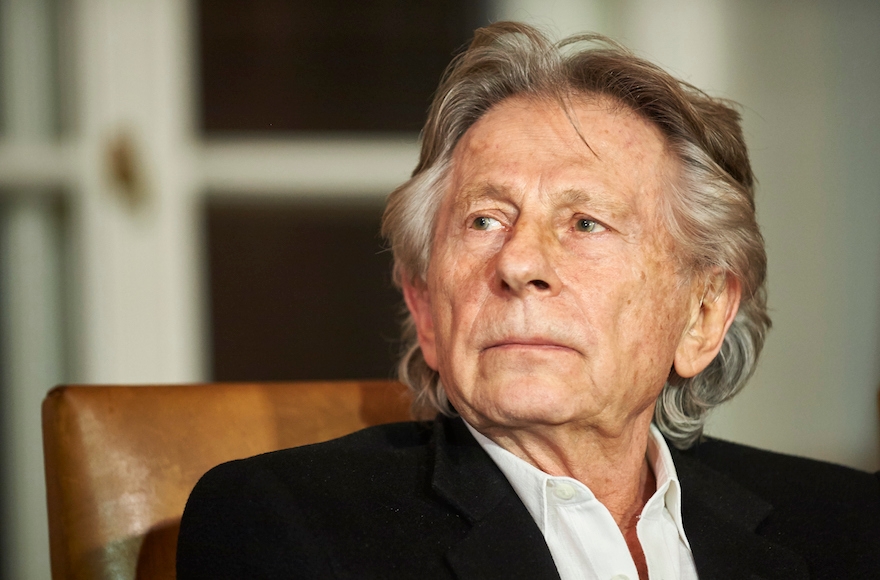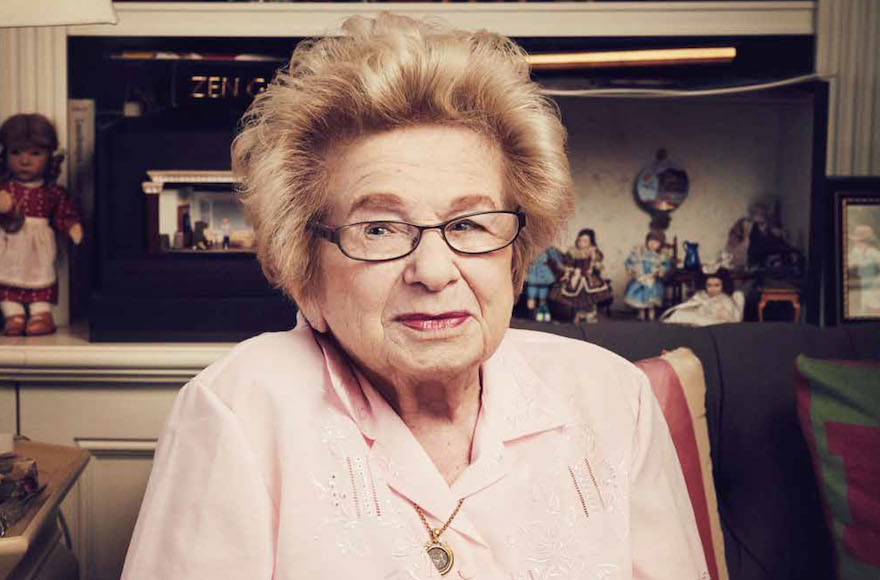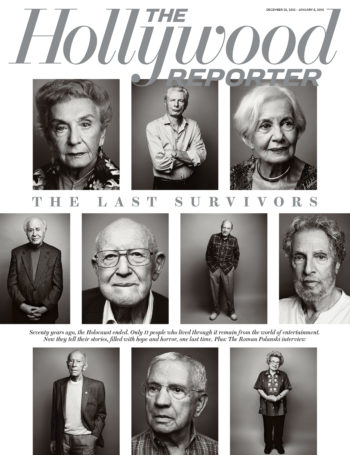Roman Polanski, 10 other Jews in entertainment open up about surviving the Holocaust
Published December 16, 2015

French-Polish film director Roman Polanski attending a press conference at the Bonarowski Palace Hotel in Krakow, Poland, Oct. 30, 2015. (Adam Nurkiewicz/Getty Images)
The Hollywood Reporter is commemorating the 70th anniversary of the end of the Holocaust with a feature on 11 survivors who went on to careers in American entertainment. The project, released Wednesday morning online and in print, includes emotional, revealing video interviews with all the subjects, including director Roman Polanski and sex therapist Ruth Westheimer.
Director Steven Spielberg, the founder of the USC Shoah Foundation, wrote an essay for the feature. Below is a look at each subject’s testimony.
Roman Polanski, 82, director of seminal films like “Rosemary’s Baby,” “Chinatown” and “The Pianist”
Polanski, whom the U.S. has repeatedly attempted to extradite on sexual assault charges, is wary of speaking to American reporters. But he spoke to Peter Flax, an editor at THR, for an hour about his Holocaust experience.
Polanski tells the story of the first person he saw killed: “Some old woman was crying and wailing in Yiddish — I didn’t quite understand because I did not speak Yiddish,” he says. “And at one moment she was on all fours, and suddenly there was a gun in the hand of that young SS man, and he shot her in the back, and the blood came out, like the little fountain that we have in the offices, you know, a bulb of blood.”
Flax was also allowed to view Polanski’s five-hour testimony to the USC Shoah Foundation, which has never been made public. Flax describes Polanski’s narration of the video, which filmed him walking through his native Krakow, Poland.
“He points out the spot where he slipped through barbed wire to escape the ghetto, tours the first ghetto apartment his family called home and muses about how opposite sides of a city street could demarcate life and death,” Flax writes.
Branko Lustig, 83, Academy Award-winning producer of films like “Schindler’s List” and “Gladiator”
When the British army liberated Auschwitz, where Lustig was a prisoner at age 12, the sound of their bagpipes made him think that he “had died finally, and that was the angels’ music in heaven.”
Years later, he met Spielberg when the director was developing “Schindler’s List.”
“He kissed my number [from the concentration camp, tattooed on Lustig’s arm] and said, ‘You will be my producer.’ He is the man who gave me the possibility to fulfill my obligation,” Lustig says.
Meyer Gottlieb, 76, president of Samuel Goldwyn Films and producer of films like “Master and Commander,” “The Secret Life of Walter Mitty” and “Tortilla Soup”
After leaving Poland as a child in the early 1940s, Gottlieb didn’t visit his native Polish village — where most of his relatives were forced to dig their own graves before being shot by the Germans — until six decades later, in 2008.
“The truth of the matter is that the weapons of massive destruction are not bombs — they’re hatred, intolerance and bigotry,” he tells THR.
Robert Clary, 89, film, TV and stage actor best known for his role on the sitcom “Hogan’s Heroes,” set in a German POW camp
Clary credited his natural joie de vivre and energy with sustaining him in the Buchenwald concentration camp as a child. He sang and performed with an accordionist for German soldiers every Sunday.
“Singing, entertaining and being in kind of good health at my age, that’s why I survived,” he says. “I was very immature and young and not really fully realizing what situation I was involved with… I don’t know if I would have survived if I really knew that.”
Leon Prochnik, 82, screenwriter and editor, known for adapting the script of the play “Child’s Play” into a film directed by Sidney Lumet
Prochnik grew up the son of a chocolate factory owner in Krakow. He nicknamed the tub that filled with melted chocolate “milka” and thought it had magical powers. When he repeatedly visited it to steal chocolate, great things would happen: One time, his father connected with diplomat Chiune Sugihara, the “Japanese Schindler” who help thousands of Jews leave Europe, and another time, a Nazi officer missed a Jewish prayer book in a search of the factory.

Ruth Westheimer reflected on her Holocaust experience to The Hollywood Reporter. (Courtesy of The Hollywood Reporter)
Ruth Westheimer, 87, sex therapist and TV and radio talk show host
By the time the legendary sex guru was 10 years old, she would never see her deported parents again. By the time she was 17, she had moved to British-controlled Palestine to train as a sniper in the Haganah, a precursor to the Israeli Defense Forces (even though she only stood 4 feet 7 inches tall).
“Looking at my four grand-children: Hitler lost and I won,” she tells the magazine.
Curt Lowens, 90, film and stage actor known for portraying Nazi characters, including notorious Dr. Josef Mengele in the Broadway play “The Deputy”
After escaping Berlin and taking on a new identity in a small town in Holland, Lowens (née Loewenstein) joined a three-person Dutch resistance cell that saved 123 Jewish children by delivering them to families who hid them. After V-E Day, Lowens received a commendation from then-Gen. Dwight D. Eisenhower for rescuing two fallen American airmen.
Bill Harvey, 91, cosmetologist to the likes of Judy Garland, Mary Martin, Zsa Zsa Gabor and Liza Minelli
After being transported from Auschwitz to Buchenwald on a frigid cattle car, Harvey fell unconscious and was left for dead in a pile of corpses stacked by the crematorium. Someone pulled him out days later. He was 21 years old and weighed about 72 pounds.
“My humble explanation for all the tragedies and the bad people who want just to kill is that maybe there have to be some bad things in order to appreciate all the good things that this world gives you,” Harvey says.
Ruth Posner, 82, founding member of the London Contemporary Dance Company, actress and former member of the Royal Shakespeare Company
One day, while living in the Warsaw Ghetto, Posner and her aunt casually crossed from the Jewish to the Aryan side of the street. They shed their yellow armbands and assumed new identities. She would escape and keep her story secret for decades.
“Now when I talk about it, it seems like I’m describing my role in a play,” Posner says.
Dario Gabbai, 93, actor in the 1953 war film “The Glory Brigade”
Gabbai is likely the last living former member of the Sonderkommando, a set of Jews forced to assist the Germans with various morbid tasks in the concentration camps.
“I have inside some stuff I can never tell,” Gabbai says. “I saw so many things. Even now, I like to cry to get it out of my system. But it doesn’t go out.”
He recalls one time seeing two of his friends from his native Thessaloniki, Greece, in line outside a gas chamber. All he could tell them was the best way to stand inside to minimize their suffering.
Celia Biniaz, 84, supporter of the USC Shoah Foundation whose testimony was included in DVD version of “Schindler’s List”
Biniaz was on the real-life list of Jews saved by Oskar Schindler. When Liam Neeson was first cast for the film, some involved in the production thought that he was too handsome for the role.
“I told them that Mr. Schindler was very handsome, so he gets the job,” Biniaz said.

The Hollywood Reporter’s “The Last Survivors” magazine cover, published Dec. 16, 2015.
This entry passed through the Full-Text RSS service – if this is your content and you’re reading it on someone else’s site, please read the FAQ at fivefilters.org/content-only/faq.php#publishers.













